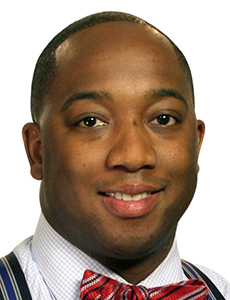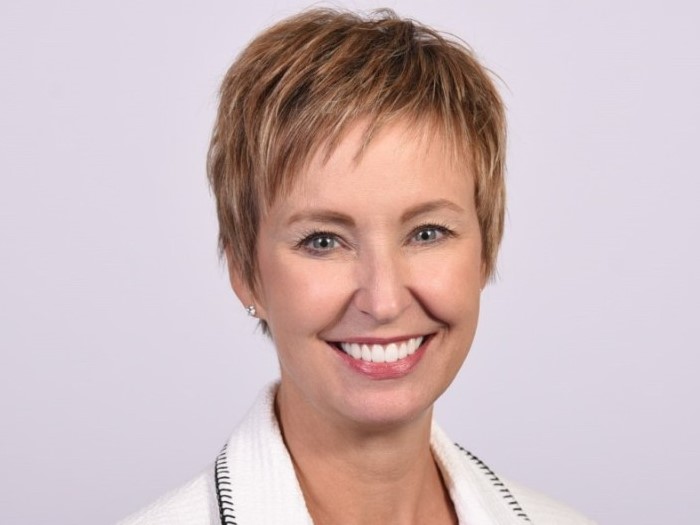Time to Get Uncomfortable: Addressing Diversity & Inclusion in Insurance

The events of the last year have brought an increased emphasis on diversity and inclusion within the commercial insurance industry.
Some of these events have been strikingly visible, such as the widespread protests that followed the death of unarmed Black men. Others, such as the disproportionate effect that the COVID-19 pandemic has had on ethnic and racial minorities in the U.S., have remained largely invisible.
Insurance cannot expect to solve these issues alone, of course, but neither can it lag behind when it comes to tackling social injustice. Indeed, as professionals many of us feel that we have a responsibility to use our knowledge, experience and influence to work for a better society.
Risk & Insurance®, as an affiliate of The Institutes, is committed to moving things forward. Our parent company recently codified its approach via a statement on racism and intolerance and a review of its management education program. This is just a first step; everyone in the industry needs to do more.
So with that in mind, we thought we would take the opportunity to continue an important conversation: How can we, as an industry, promote diversity and inclusion?
To try to answer that question, we asked several industry leaders from across the insurance space to give us their take.
Making Meaningful Change
All the industry leaders we spoke to agreed that it is possible for insurance to make meaningful change when it comes to diversity and inclusion, and there was a high degree of agreement when it came to the key challenges that the industry faces.
Foremost among these was a cultural “block” when it comes to recruitment. Candidate pools are still limited by a number of factors — including not only the schools a candidate attended but also their social background — and as an industry, we need to radically re-conceptualize how we identify talent.
As Talia Fox, CEO of KUSI Global, put it, “In a world where systemic racism, bias processes and inherited systems are baked into the bread of corporate life, ‘good fit’ can easily turn into the very thing that impedes progress toward more diversity and equity. So, what do you do? Get creative. Identify new relationships. Create an expanded model of the right employee.”

Talia Fox, CEO, KUSI Global
This is a problem, of course, way beyond the insurance industry. Fintech lags behind in female inclusion, as does the financial services industry as a whole and even the entirety of corporate America.
As Lael Chappell, director, insurance distribution at brokerage Attune and a 2021 At Large Power Broker winner, pointed out, if one looks at the levels of diversity at the executive and senior leadership roles across all Fortune 500 companies, they will see that there is a huge disconnect between the representation of the population and those who are in positions of power in these institutions.
Remedying this situation within commercial insurance — and indeed across corporate America — will rely on a number of key priorities and processes. One of which will be the ability to develop a unified definition and understanding of diversity, belonging and inclusion and a consensus on what meaningful action looks like.
This definition could be measured via representation — at the organizational level in terms of diverse management or at the industry level with diverse representation at industry events. Equally, however, this definition could be measured via awareness by presenting the industry to those who may not be currently represented.
Either way, such a definition needs to be capable of planting the seeds to create a wider pool of talent to recruit.
Several industry leaders also stressed that the industry should take responsibility for its current failings. Fox said the industry should “face the music,” in her words, and be proud of the challenges before it and not run scared of them.
She argued that companies should not be scared to run a campaign that brands them as a “learning organization.”
At the moment, she said, many companies are afraid to look at the real challenges around diversity, equity and inclusion, because there are often no systems in place to transform those initiatives from conversations to intrinsic habits. It is easy to ignore challenges, to compartmentalize and hope that the tension will go away.
“But silence and inaction are not options anymore,” said Fox, “and they will not relieve the necessity to address what needs to be addressed.”
Others agreed.
“We need to broaden our focus to include the value of transferable skills,” said AXA XL’s head of inclusion & diversity Anna Beninger. “We need to recruit from other industries and hire talent with non-traditional backgrounds in order to be competitive into the future.”
The Benefits for the Industry
Industry professionals point to the huge benefits that could be achieved by furthering diversity and inclusion, though this point was made in several different ways. We should not only attempt to recruit a more diverse workforce in order to provide ourselves with assets for the future, but we should also recognize that many companies are not taking full advantage of the diversity they have already built up.
The benefits of a diverse workforce are abundantly obvious, even at a personal level.

Lael Chappell, director, insurance distribution, Attune, New York
Michele Lamarre, inclusion, belonging and diversity lead at QBE North America, offers an example: “If you ask someone, outside of your trusted few, for their feedback … there’s a high likelihood that you will hear or learn something new,” she said.
And even if you disagree with the feedback received or the idea presented, you have the opportunity to build on it, hopefully collectively, and come up with something new that you may not have thought of otherwise.
That’s how diversity and inclusion can work collectively to bring beneficial results and drive innovation.
Despite this, commercial insurance has been slow to promote diversity and inclusion, both within existing structures and when recruiting from outside.
Chappell noted that in the U.S. alone, the insurance industry expects nearly 50% of the current U.S. insurance workforce to retire by 2034, yet we still see a lack of action around truly committing, investing and executing on actionable plans that are necessary to establish relationships to bring in diverse talent.
This leads many in the industry, according to Chappell, to fail to embrace professional development opportunities that develop and retain diverse talent.
This, in turn, causes many to choose alternative routes or mid-career transitions as their only chances to find individual success, in an attempt to break through the generational disparities, and in hope of providing a better foundation for their families.
Breaking this unfortunate cycle will be difficult, but it is possible. It will take continual effort and may not always be the most comfortable.
However, we know that inclusion and diversity will ultimately help us to make stronger decisions, be more innovative and ultimately be more profitable.
Promoting Diversity: A Checklist
The way that you can promote and encourage diversity and inclusion as a company will, of course, depend on your individual circumstances.
However, Chappell offered detailed advice, drawn from his own experience, on how any company can lay the foundations of a truly diverse company culture. Here are just some of his recommendations:
- It is time we get comfortable being uncomfortable. Finding safe spaces and forums for people to share their experiences without fear of being reprimanded is important.
- Establish metrics and align incentives for managers and leadership around D&I goals.
- Attempt to promote diverse talent within the organization and establish access to professional development resources and mentorship to assist them with continued success.
- Analyze performance review processes and amend rating criteria to minimize the impact of conscious or unconscious bias.
- Establish a platform for colleagues to report any injustices and take demonstrable disciplinary action against colleagues who perform these acts, as well as holding managers who are aware and do not take action accountable.
- Establish strategic partnerships with underrepresented networks, associations and universities to broaden talent pool and attract more diverse talent.
- Structure the interview process to ensure there is diversity in the candidates panel as well as diverse colleagues (or outside consultants from diverse backgrounds) represented in hiring decisions.
- Change the company culture by committing to internal and external visibility of your D&I efforts and celebrate the successes (especially those that evidence positive impact to your bottom line).
- Establish a framework for diverse teams to create innovative ways to add additional value to your organization and your customers.
Sharing Our Experiences
Finally, a majority of industry leaders stress the importance of starting and sustaining a dialogue. Some of their colleagues, they say, are simply unaware of the level of discrimination that minorities face in the commercial services industry.

Michele Lamarre, inclusion, belonging and diversity lead, QBE North America
For that reason, it’s important that we continue to share our experiences in an open, honest way.
This is, after all, not a niche problem. According to a 2018 study conducted by Marsh and NAAIA (the National African American Insurance Association), nearly half of the survey participants confirm racism and racial bias as impeding the advancement of their careers in the insurance industry.
Some put this lack of progress down to the lack of leadership on the issue. Fox said that in her experience many companies, organizations and industries are motivated to engage in the conversation but are not willing to put real resources behind diversity and inclusion programs.
Chappell goes further. It’s “plain and simple,” he said — the industry needs to hold itself accountable for ensuring that everyone is provided the same access, networks and advancement opportunities and particularly focus on the promotion and recruitment of underrepresented talent at the senior and executive leadership level.
That said, the professionals we talked to are positive about the future. Lamarre told us that many of the leaders she works with are long-time insurance industry veterans, and that among this group, there is an understanding that attracting new and diverse talent is an imperative for the future.
As such, they are working hard to adopt new hiring habits and are open to guidance from a D&I perspective. Even better, she said, they themselves are full of ideas on how to make change, and that’s refreshing to experience.
A Vital Crossroads for Insurance
Indeed, this note of hope was echoed by many we talked to in the industry.
As Fox said, we should remember that “diversity is a fact,” and that “it’s all around us in beautiful ways.”
Equity, inclusion and belonging require choice, intentionality and commitment, and the challenge of creating employee and customer management systems that create growth and are pliable enough to adjust as needed are critical to inclusive and representational success.
Because of this, we are at a critical point for inclusion and diversity in the commercial services industry. One in which there is not only an acknowledgement for a need for action but in which we also have leaders who are genuinely committed to being allies and executing on delivering the necessary changes within the industry, according to Chappell.
And many hope that industry leaders will now be compelled by purpose and people to engage in real change and that companies can recognize the value in the journey toward growth and find collective, connected purpose. Ultimately, leaders, management and CEOs around the world have an opportunity to create a legacy that will outlive stock prices, said Fox.
We just need the courage to embrace that opportunity. &










